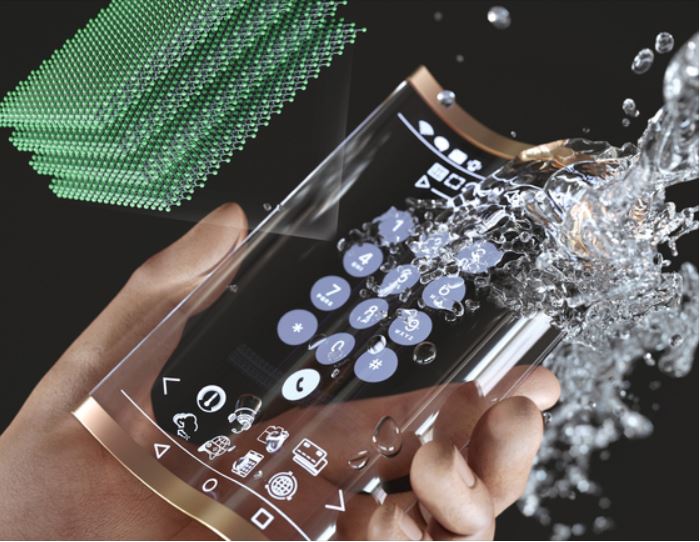
The front cover image of the ACS Nano journal published on June 13 featuring a washable flexible transparent OLED panel developed by a KAIST research team [ACS PUBLICATIONS]
A Korean research team has developed a transparent and flexible organic light-emitting diode (OLED) display that can withstand water for up to six hours.
KAIST said on Wednesday that its research team including Choi Kyung-cheol, professor of electrical engineering, has developed a nanomaterial-based flexible OLED panel that is water-resistive and transparent, jointly with National Nano Fab Center’s research team led by Lee Yong-hee.
The transparent flexible OLED panel was developed with two-dimensional titanium carbides, or so-called MXenes.
MXene materials feature high transparency, metallic conductivity and flexibility, which makes them promising for flexible transparent displays. However, existing MXene-based displays are easily degraded when exposed to moisture in the air and therefore lack durability.
The KAIST research team developed an MXene-based transparent flexible OLED panel with a longer lifespan by adopting a thin encapsulation system, which prevents the materials from oxidization caused by moisture or oxygen.
The latest MXene-based OLED panel can operate for over 2,000 hours and endure a bending deformation of a 1.5-millimeter radius, according to the tech university. The display can also stay underwater for up to six hours without any degradation in performance.
As transparent flexible displays are increasingly gaining popularity for automotive, healthcare, defense and fashion applications, the research team expects that the latest findings will help improve the environmental stability of MXene-based displays, said KAIST.
“We expect the latest research will provide a guideline for the utilization of MXene materials as electrical devices and can also be applied for various applications that require transparent flexible displays, such as automotive displays, the fashion industry, functional clothing and more,” said Choi of KAIST.
“In order to widen the gap with China’s OLED technologies, such fusion technologies in OLED displays need to be continuously developed,” added Choi.
The lead author of the latest study is Jeong So-yeong, a Ph.D. student at KAIST. The research was published in ACS Nano, a journal dedicated to nanotechnology, on April 5 as an online article and as the front cover of the issue on June 13. It is titled “Highly Air-Stable, Flexible, and Water-Resistive 2D Titanium Carbide MXene-Based RGB Organic Light-Emitting Diode Displays for Transparent Free-Form Electronics.”











